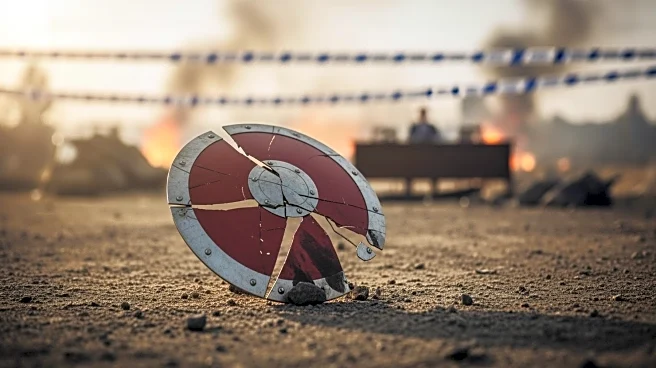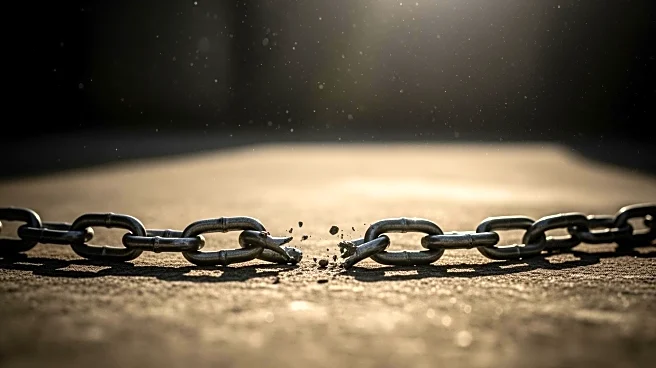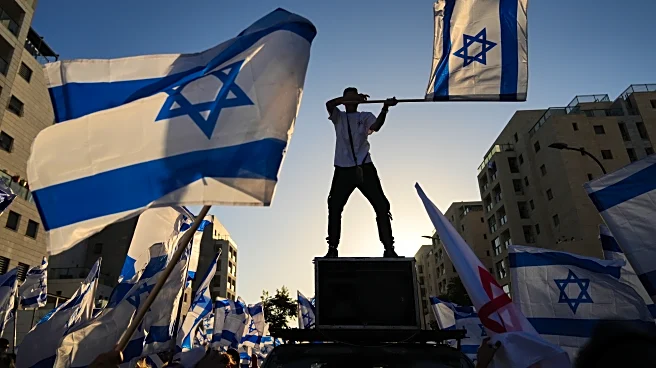What's Happening?
The Israeli Defense Forces (IDF) have reported that Hamas still maintains a significant military presence in the Gaza Strip, with approximately 20,000 fighters and access to thousands of weapons, including
missiles capable of reaching central Israel. Despite the IDF's efforts over the past two years, which resulted in the killing of over 22,000 Hamas militants and the dismantling of much of its infrastructure, Hamas has managed to replenish its ranks. The IDF describes Hamas' military wing as more of a guerrilla group than a standing army, with only 25% of its tunnel network destroyed. The cease-fire has seen Hamas troops return in force, launching crackdowns on perceived opponents and civilians.
Why It's Important?
The replenishment of Hamas' forces poses ongoing security challenges for Israel, as the group retains the capability to launch attacks deep within Israeli territory. This development underscores the complexity of achieving lasting peace in the region, as military actions alone have not diminished Hamas' ability to regroup and maintain influence. The situation also highlights the humanitarian crisis in Gaza, which may be contributing to the recruitment of new fighters. The continued presence of Hamas fighters and their access to weapons could impact regional stability and influence international diplomatic efforts aimed at resolving the conflict.
What's Next?
The Israeli government may face increased pressure to address the security threat posed by Hamas, potentially leading to further military operations or diplomatic initiatives. The ongoing debate over conscription laws, particularly regarding ultra-Orthodox men, could also influence Israel's military strategy. International stakeholders, including the United States, may continue to monitor the situation closely, considering the implications for broader Middle East peace efforts. The cease-fire's durability remains uncertain, and future negotiations may hinge on Hamas' willingness to disarm and cede power.
Beyond the Headlines
The replenishment of Hamas forces raises ethical questions about the impact of prolonged conflict on civilian populations and the role of humanitarian aid in conflict zones. The recruitment of new fighters amid a humanitarian crisis suggests a cycle of violence that is difficult to break. Additionally, the situation may influence public opinion and policy debates within Israel regarding military strategy and conscription laws.












